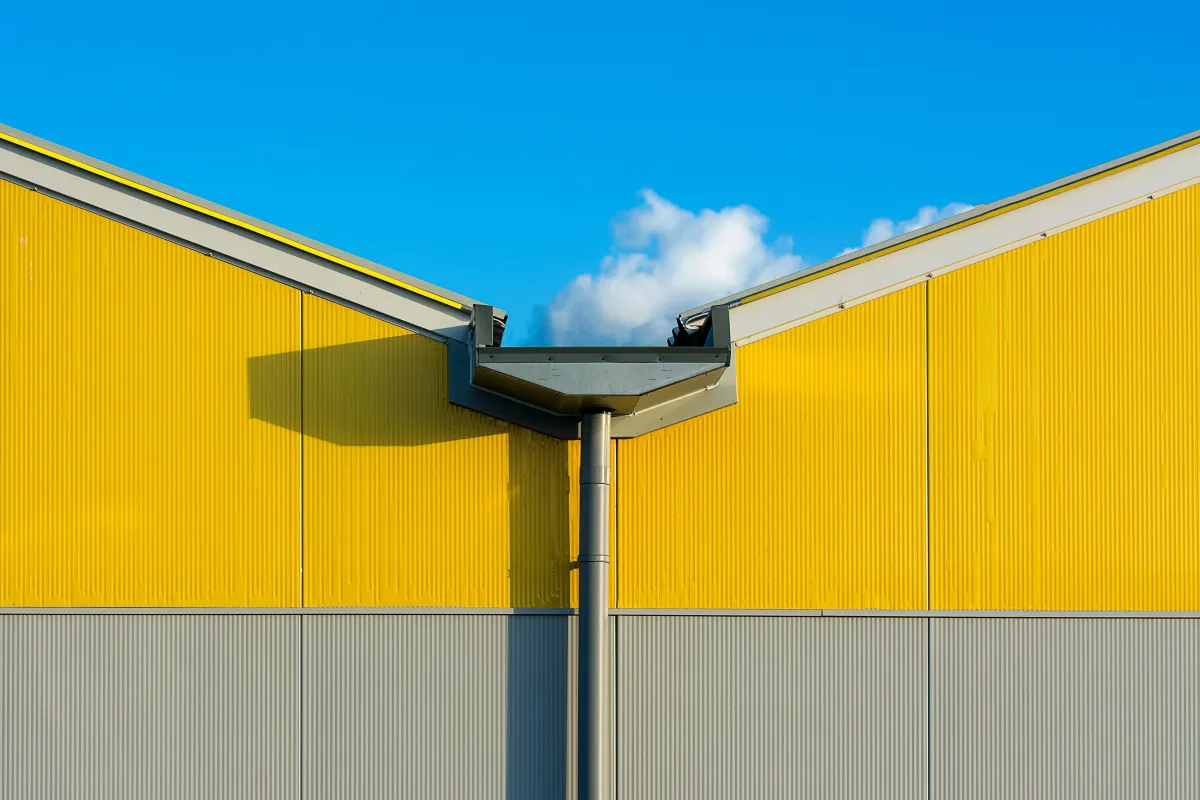
Commercial Gutter Systems: What Business Owners in McCracken County Should Know
For business owners in McCracken County, maintaining a commercial property is about more than just appearances. It’s about protecting your building, employees, customers, and long-term investments. One often-overlooked feature that plays a major role in building health is the gutter system.
Unlike residential gutters, commercial gutter systems must handle higher volumes of water, larger roof surfaces, and greater durability demands. Choosing the right system — and keeping it properly maintained — can save business owners thousands in repair costs while preserving the value of their property.
This blog will explain the essentials of commercial gutter systems, highlight the key benefits, and outline what every McCracken County business owner should know before installing or upgrading one.
Why Commercial Gutters Matter
Commercial properties face unique challenges that make effective gutter systems essential:
Larger Roof Surface Area: Bigger buildings mean more water runoff that needs to be directed away quickly and safely.
Public Safety Concerns: Overflowing gutters can create dangerous icy walkways or slippery entrances.
Building Protection: Without proper drainage, water can erode foundations, damage siding, and compromise structural integrity.
Business Continuity: Water damage can disrupt operations, damage inventory, and lead to expensive downtime.
Investing in the right gutter system is not just maintenance — it’s risk management.
Types of Commercial Gutter Systems
Business owners in McCracken County have several options when it comes to commercial gutters. Each system is designed for different property types and needs.
Box Gutters
Large, rectangular gutters designed to handle heavy water flow
Common in flat-roofed or large commercial buildings
Can be built into the roofline for a seamless look
K-Style Gutters
Shaped like crown molding for a more decorative appearance
Popular for retail and office buildings where curb appeal matters
Available in larger sizes than residential versions to handle commercial loads
Half-Round Gutters
Rounded design helps minimize clogs and improve flow
Often chosen for historic or architectural buildings
Typically more expensive but highly durable
Seamless Aluminum Gutters
Custom-fit to the building with fewer seams and leak points
Low-maintenance and long-lasting
A versatile option for many commercial properties
Key Considerations for Business Owners
Before investing in a commercial gutter system, it’s important to think through several factors.
Roof Size and Pitch
Large or flat roofs produce heavy runoff that requires wide gutters and properly sized downspouts.
Local Weather
In McCracken County, heavy rain and occasional snow mean gutters must handle fluctuating water loads and freeze-thaw cycles.
Material Durability
Aluminum, galvanized steel, and copper are common options. The right material depends on budget, aesthetics, and long-term performance expectations.
Maintenance Requirements
Commercial properties often require professional cleaning schedules to keep gutters clear of debris and functioning properly.
Code Compliance
Local building codes may specify drainage requirements for commercial structures. A professional installer ensures compliance.
Steps to Choosing and Maintaining Commercial Gutters
Here’s a process business owners can follow to make the best decision for their property:
Step 1: Schedule a Professional Inspection
A qualified contractor can evaluate your building’s roofline, water flow needs, and problem areas.
Step 2: Select the Right System
Decide between box, K-style, half-round, or seamless gutters based on your building type and design preferences.
Step 3: Choose Materials Wisely
Balance upfront cost with long-term performance. Aluminum is cost-effective, steel is durable, and copper offers premium longevity.
Step 4: Implement Regular Maintenance
Create a cleaning and inspection schedule, especially after storms or during heavy leaf-fall seasons.
Step 5: Monitor for Red Flags
Watch for sagging gutters, pooling water near foundations, or visible rust and cracks — all signs that repairs are needed.
FAQs
What size gutters are best for commercial buildings?
Most commercial properties require 6-inch or larger gutters to handle heavy water flow. The exact size depends on roof area and slope.
Are seamless gutters better for commercial use?
Yes. Seamless gutters reduce leak points and require less maintenance, making them ideal for high-volume water management.
How often should commercial gutters be cleaned?
At least twice a year, though quarterly cleanings are recommended for buildings near trees or heavy debris sources.
Can clogged gutters damage my business property?
Yes. Overflow can cause water intrusion, foundation erosion, and even interior damage — all of which are expensive to repair.
Do commercial gutters come with warranties?
Many systems do. Warranties typically cover material performance and workmanship, depending on the installer.
Conclusion
For McCracken County business owners, commercial gutter systems are more than an afterthought — they’re an investment in building safety, efficiency, and longevity. By choosing the right gutter type, material, and maintenance plan, you can protect your property and avoid costly damage.
If your commercial building needs new gutters or an inspection, working with a professional installer in West Paducah ensures your system is built to last and designed to handle local weather conditions.